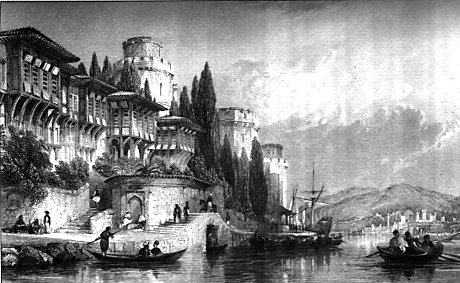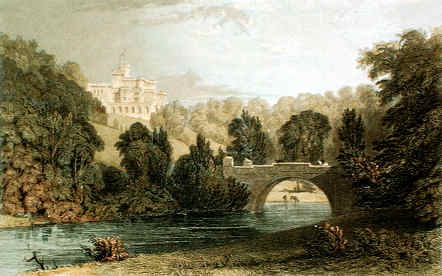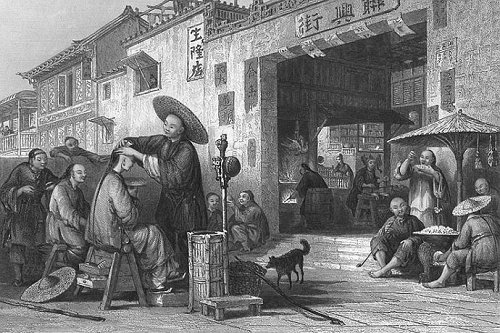Thomas Allom (1804 – 1872)
Get a Thomas Allom (1804 – 1872) Certificate of Authenticity for your painting (COA) for your Thomas Allom (1804 – 1872) drawing.
For all your Thomas Allom (1804 – 1872) artworks you need a Certificate of Authenticity (COA) in order to sell, to insure or to donate for a tax deduction.
Getting a Thomas Allom (1804 – 1872) Certificate of Authenticity (COA) is easy. Just send us photos and dimensions and tell us what you know about the origin or history of your Thomas Allom (1804 – 1872) painting or drawing.
If you want to sell your Thomas Allom (1804 – 1872) painting or drawing use our selling services. We offer Thomas Allom (1804 – 1872) selling help, selling advice, private treaty sales and full brokerage.
We have been authenticating Thomas Allom (1804 – 1872) and issuing certificates of authenticity since 2002. We are recognized Thomas Allom (1804 – 1872) experts and Thomas Allom (1804 – 1872) certified appraisers. We issue COAs and appraisals for all Thomas Allom (1804 – 1872) artworks.
Our Thomas Allom (1804 – 1872) paintings and drawings authentications are accepted and respected worldwide.
Each COA is backed by in-depth research and analysis authentication reports.
The Thomas Allom (1804 – 1872) certificates of authenticity we issue are based on solid, reliable and fully referenced art investigations, authentication research, analytical work and forensic studies.
We are available to examine your Thomas Allom (1804 – 1872) painting or drawing anywhere in the world.
You will generally receive your certificates of authenticity and authentication report within two weeks. Some complicated cases with difficult to research Thomas Allom (1804 – 1872) paintings or drawings take longer.
Our clients include Thomas Allom (1804 – 1872) collectors, investors, tax authorities, insurance adjusters, appraisers, valuers, auctioneers, Federal agencies and many law firms.
We perform Thomas Allom art authentication, appraisal, certificates of authenticity (COA), analysis, research, scientific tests, full art authentications. We will help you sell your Thomas Allom or we will sell it for you.

Bosphorus
Thomas Allom was an English artist, topographical illustrator and architect, and one of the founding members of what eventually became the Royal Institute of British Architects (RIBA).
He was born in Lambeth, South London, and was the son of a coachman from Suffolk. In 1819, he was apprenticed to architect Francis Goodwin for whom he worked until 1826. He then studied at the Royal Academy School. His designs for churches shown at exhibitions in 1824 and 1827 aroused considerable interest, and he later designed many buildings in London, including a workhouse in Marloes Road, Kensington (1847), the Church of Christ in Highbury (1850), the Church of St Peter in Notting Hill (1856), and the elegant Ladbroke Estate in west London. Further afield, his works included workhouses at Calne, Wiltshire (1847) and in Liverpool, the design of the William Brown Library also in Liverpool (1857-1860), and the tower of the Church of Basford St. Leodegarius, near Nottingham (1860). He also worked with Sir Charles Barry on numerous projects, including the Houses of Parliament and the remodeling of Highclere Castle.

Landscape
However, Allom is chiefly known for his numerous topographical works, which were used to illustrate books on travel. From the 1820s onwards, he traveled extensively through the UK and mainland Europe. In 1834 he arrived in Istanbul, Turkey, and produced hundreds of drawings during journeys through Anatolia, Syria and Palestine. The results of this expedition were published in 1838 in Constantinople and the Scenery of the Seven Churches of Asia Minor, published in two volumes with text by Robert Walsh. Emily Reeve’s Character and Costume in Turkey and Italy, published in London in 1840, was also illustrated with engravings by Allom. He is also remembered for numerous illustrations of China, published in China Illustrated in 1845.
Allom suffered from a heart condition in his later years, and although he only retired in 1870, his artistic and architectural output slowed during the 1860s. He designed Holy Trinity Church, Castelnau (in South west London) in 1868 – his local church to which he contributed £50 towards the cost of its construction. In 1865 he was commissioned to design a mausoleum for former MP George Dodd in West Norwood Cemetery (George Dodd, who died on 15 December 1854, was one of the Gentlemen of Her Majesty’s privy chamber from 1844, and MP for Maidstone from 29 June 1841 to May 1853).

An Itinerant Barber
Reviews
1,217 global ratings
5 Star
4 Star
3 Star
2 Star
1 Star
Your evaluation is very important to us. Thank you.
